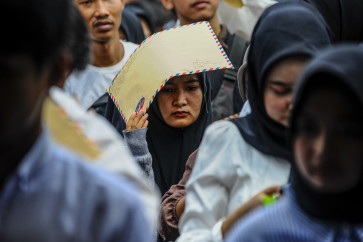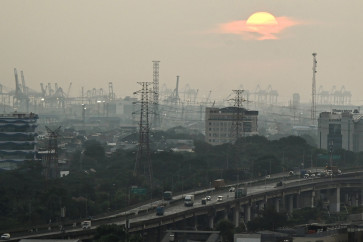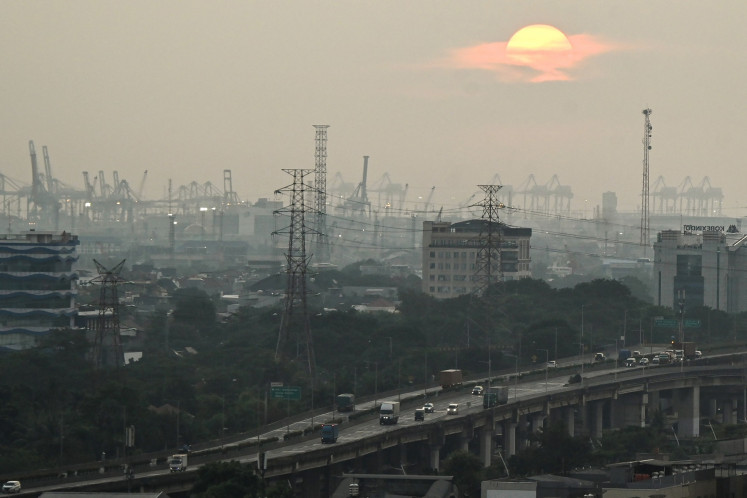Navigating the digital economy for marginalized communities
Although internet users have reached 73 percent of the total Indonesian population, Indonesia’s internet connection speed still lags compared with its neighbors.
Change text size
Gift Premium Articles
to Anyone

T
he digital economy is continuously unfolding, accelerated by the COVID-19 pandemic. The leading sectors are e-commerce, transport, online media and financial services. These sectors provide economic opportunities to enhance prosperity and welfare.
But there is a growing concern about whether marginalized communities can participate and benefit from this transformation. If so, in what ways, and how to navigate them to ensure no one is left behind.
A recent report by Google, Temasek, and Bain & Company predicted that Indonesia’s digital economy will total US$130 billion in 2025 and grow to $360 billion in 2030. That is fantastic worth. But the expected value depends on a set of enablers, including the readiness of digital skills for marginalized communities and communication infrastructure for rural areas.
Broadly, the digital economy is economic activities people do over the internet using technologies to increase efficiency, improve productivity, widen market spread and reduce costs. It incorporates the physical infrastructure that digital technology depends on, such as broadband lines and devices, as well as the power and the function they offer, like internet of things (IoT), data analytics and cloud computing.
This set of the digital economy promises economic development for marginalized individuals. An example of this can be observed in e-commerce industries that increase the productivity of household enterprises, which is crucial in expanding the middle class and creating new prosperity for excluded workers such as women, the youth, semi low-skilled and disabled people.
Numerous stories illustrate how the digital economy can build welfare and prosperity. Think of semiskilled workers living in peripheral Indonesia, selling shoes and reaching a market they never imagined through delivery and e-commerce platforms. Again, a group of marginalized women living in rural areas, say Papua, create traditional baskets made of bamboo and sell them online.
A low-skilled laborer using a motorbike and getting a job as a driver in Indonesia’s ride-hailing companies, a young family in Bali leasing their flat to tourists throughout the year using the Airbnb platform. These depict how the digital economy can create new economic models and jobs.
It also can construct inclusivity for women in which internalized belief systems, such as women should be doing domestic work and not be involved in market creation, still exists. According to the World Bank report (2021), Beyond Unicorns, an estimated 9.6 percent of females do e-commerce activities as a primary job. This includes selling products via platforms and social media. Regardless, so much still needs to be done, as 9.6 percent is still a very small number of the total population of women.
While the digital economy has benefited low-skilled laborers and marginalized communities in accessing economic opportunities and creating wealth, policymakers must address some problems related to rural areas' technology or information and communication technology infrastructure and digital talents.
First, well-developed internet infrastructures correlate to the digital economy's backbone. With infrastructure, the technology supporting the digital economy can be implemented. In this sense, universalizing internet access.
The We Are Social’s report, the Digital Overview Report, states nearly 73 million Indonesians are still unconnected to internet infrastructures in almost all regions across the vast archipelago, including Papua, Nusa Tenggara, Sulawesi, Sumatra, Kalimantan, Java and Bali.
This infrastructure gap puts Indonesia behind other neighboring Asian countries. This situation can hinder many Indonesians from exploiting significant digital economic values for small and medium enterprises (SMEs) in peripheral and rural areas.
Moreover, even though internet users have reached 73 percent of the total Indonesian population, Indonesia’s internet connection speed still lags compared with its neighbors such as Singapore and Malaysia. According to the report, the median download speed of Indonesia’s internet connection is only slightly better than India, Columbia, Kenya and Ghana.
The impact of that matter is clear. Poor communication infrastructure will perpetuate a gap in digital literacy, mainly for indigenous and rural communities. To illustrate, digital infrastructure will enable rural farmers to use e-commerce platforms to market their produce. Nonetheless, this challenge can be addressed by allocating funding and investment in communication infrastructure and prioritizing rural areas.
Second, digital skills are essential components in exploiting chances. In Indonesia, it has been generally known that digital skills vary across different demographic groups and socioeconomic backgrounds. Individuals from urban areas and higher-income households are better able to operate with a minimum level of digital skills, such as using an internet browser and email, and running standard mobile applications, compared with the communities living in rural demographic areas where low income is there.
This is due to poor communication infrastructure and uneven access to technologies. Similarly, improving digital skills for rural communities demands government intervention by allocating more funding to invest in human development for marginalized communities.
In short, while the digital economy creates new economic prospects for marginalized people through job creation, addressing policy issues in communication infrastructure and digital skills by providing more funding and investment is crucial in achieving the predicted output of $360 billion for the next seven years. It would become a return on investment.
Without addressing the digital talents and infrastructure, Indonesia risks stalling its growth and leaving good opportunities untapped.
***
The writer is a social development analyst.









